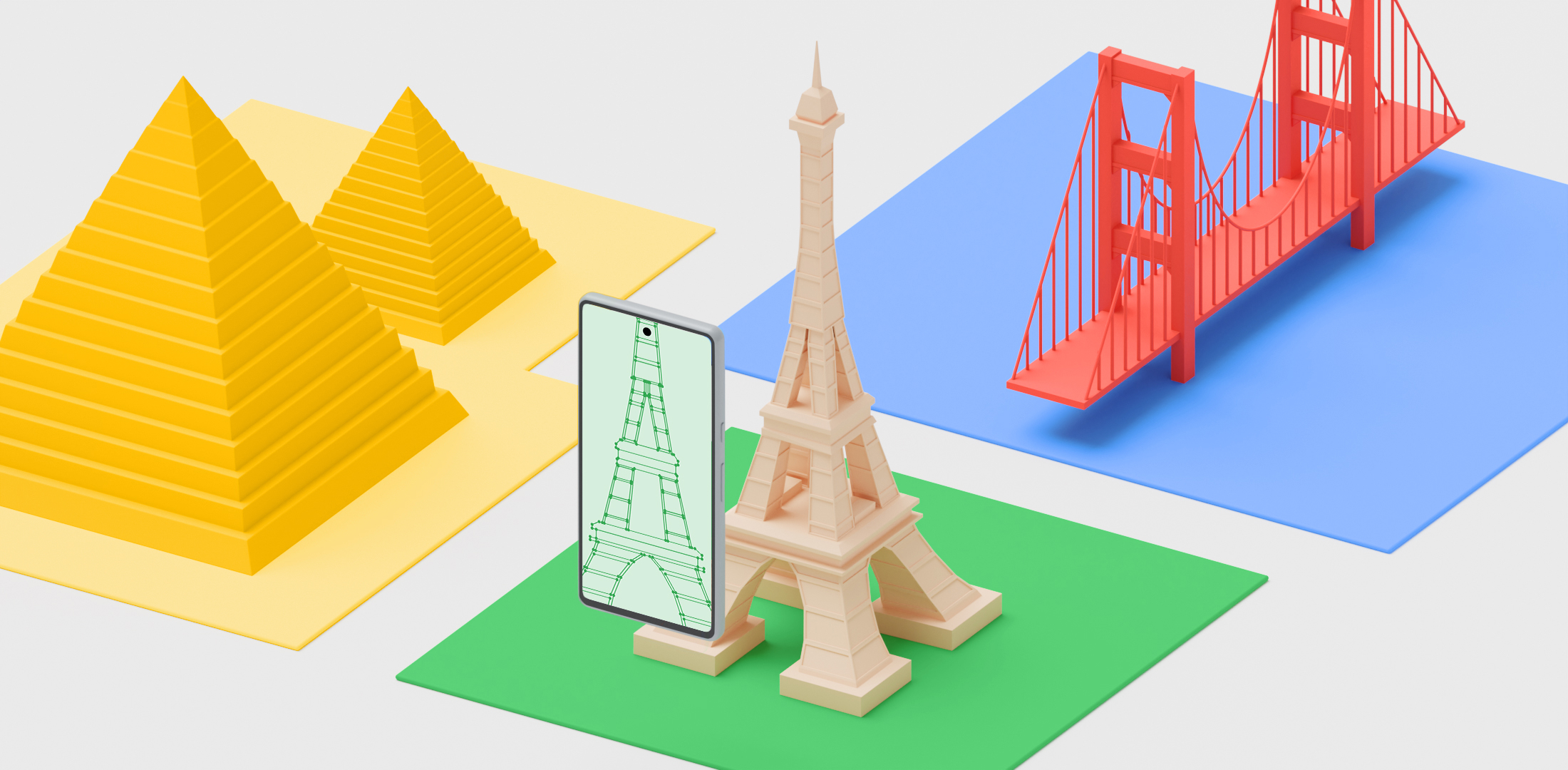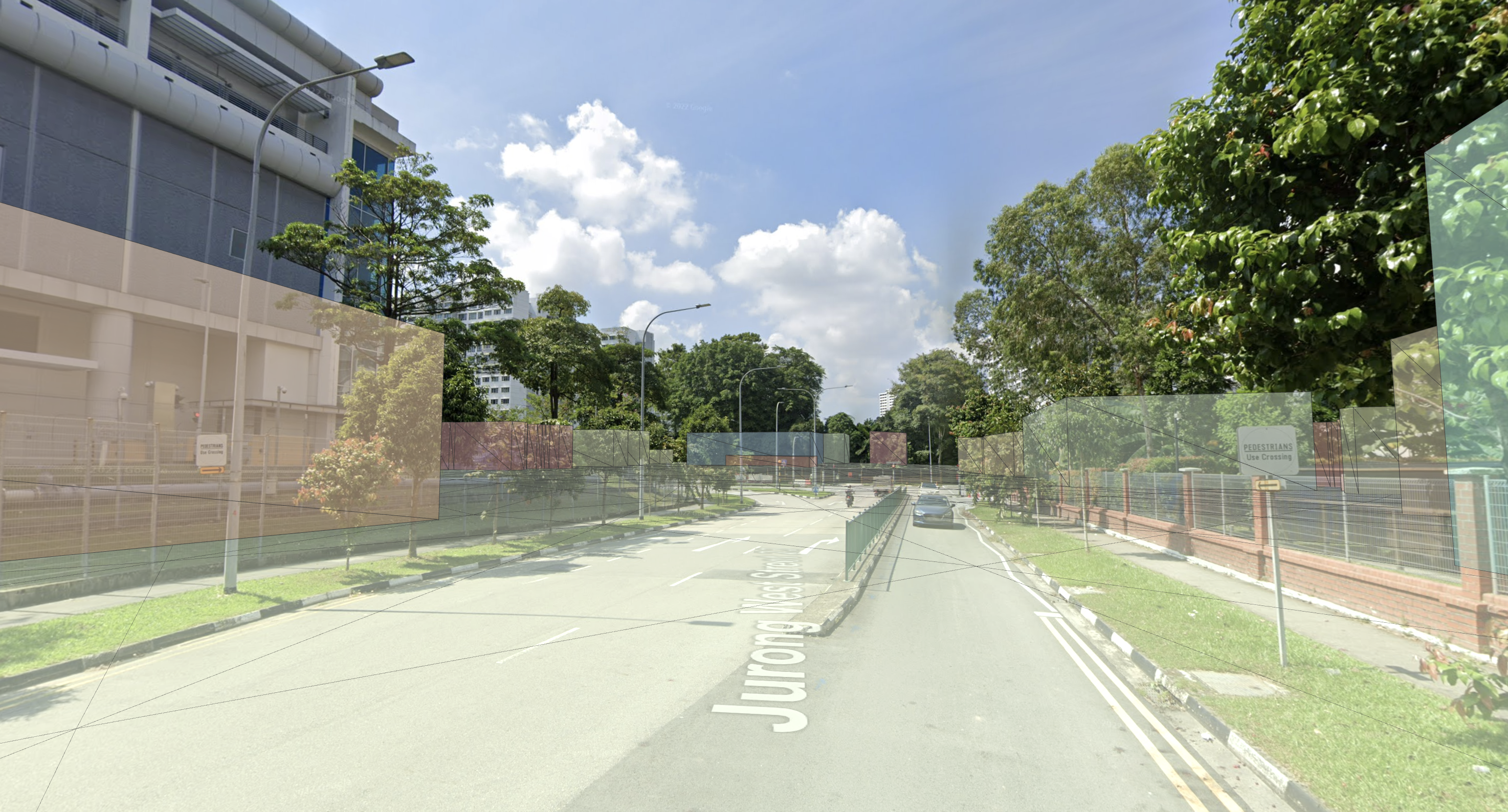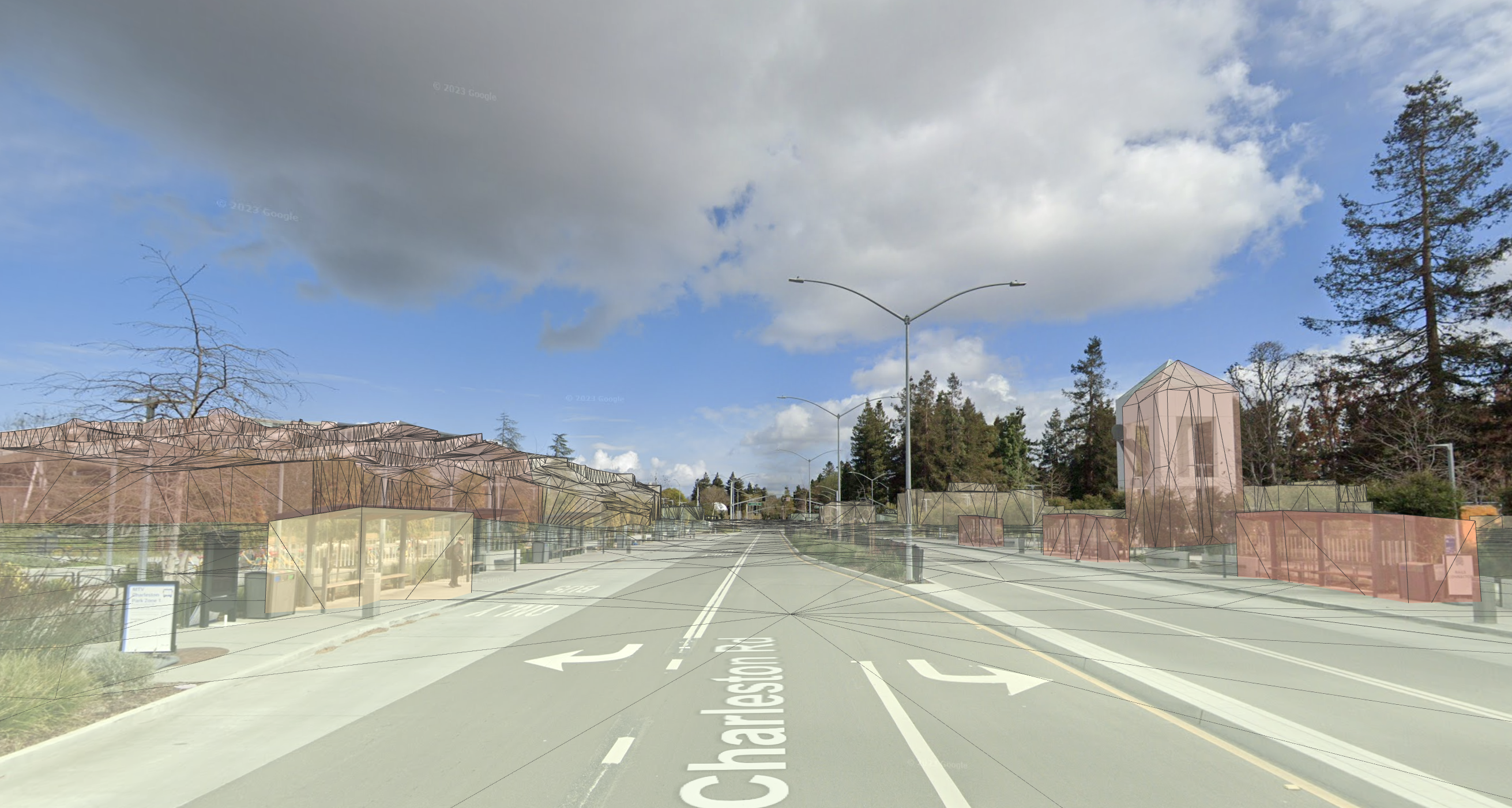Page Summary
-
Streetscape Geometry APIs provide the geometry of terrain, buildings, or other structures derived from Google Street View imagery.
-
This geometry can be used for occlusion, rendering, or placing AR content through hit-test APIs.
-
Enabling Streetscape Geometry requires setting specific modes in the
GARSessionConfiguration. -
Streetscape Geometry information, such as type, mesh, transform, and quality, is accessed through
GARStreetscapeGeometryobjects. -
AR content can be attached to Streetscape Geometry by creating anchors using the
createAnchorOnStreetscapeGeometrymethod or performing hit-tests withraycastStreetscapeGeometry.

The Streetscape Geometry APIs provide the geometry of terrain, buildings, or other structures in a scene. The geometry can be used for occlusion, rendering, or placing AR content via hit-test APIs. Streetscape Geometry data is obtained through Google Street View imagery.
Try the sample
The GeospatialExample app demonstrates how to obtain and render Streetscape Geometries.
Set up the Geospatial API
To use Streetscape Geometry, you'll need to set up the Geospatial API in your project. Follow instructions on Enabling the Geospatial API to set up the Geospatial API.
Enable Streetscape Geometry
The Geospatial API obtains Streetscape Geometry data when the GARGeospatialMode is set to GARGeospatialModeEnabled and GARStreetscapeGeometryMode is set to GARStreetscapeGeometryModeEnabled.
GARSessionConfiguration *configuration = [[GARSessionConfiguration alloc] init];
configuration.geospatialMode = GARGeospatialModeEnabled;
configuration.streetscapeGeometryMode = GARStreetscapeGeometryModeEnabled;
[garSession setConfiguration:configuration error:&error];
Obtain Streetscape Geometry in an ARCore session
UseGARFrame.streetscapeGeometries to obtain all GARStreetscapeGeometry objects.
Understand GARStreetscapeGeometry
GARStreetscapeGeometry contains information about a building:
-
GARStreetscapeGeometry.type
Identifies the StreetscapeGeometry as either terrain or a building. -
GARStreetscapeGeometry.mesh
Obtain a polygonGARMeshthat corresponds to this terrain or building. -
GARStreetscapeGeometry.meshTransform
Describes the origin of the geometry. All points in theGARMeshshould be transformed byGARStreetscapeGeometry.meshTransform. -
GARStreetscapeGeometry.quality
Provides the quality of the mesh data. Levels of detail are described in the CityGML 2.0 standard.
Building LOD 1
GARStreetscapeGeometryQualityBuildingLOD_1 consists of building footprints extruded upwards to a flat top. Building heights may be inaccurate.

Building LOD 2
GARStreetscapeGeometryQualityBuildingLOD_2 will have higher fidelity geometry. Mesh walls and roofs will more closely match the building's shape. Smaller features like chimneys or roof vents may still poke outside of the mesh.

Understand GARMesh
GARMesh is a polygon mesh representing a surface reconstruction of the Streetscape Geometry.
Each GARMesh includes a vertex buffer and index buffer:
GARMesh.vertexCount
Retrieves the number of vertices in this mesh.GARMesh.vertices
Obtain the concatenated positions of mesh vertices, in coordinates relative toGARStreetscapeGeometry.meshTransform.GARMesh.triangleCount
Retrieves the number of indices in this mesh.GARMesh.triangles
Obtain the indexes of vertices that make up a face.
Attach AR content to a GARStreetscapeGeometry
Use GARSesssion.createAnchorOnStreetscapeGeometry:transform:error: to create an anchor at a given pose near GARStreetscapeGeometry.meshTransform. This anchor will inherit its tracking state from the parent GARStreetscapeGeometry.
Perform a hit-test against GARStreetscapeGeometry
GARSession.raycastStreetscapeGeometry:direction:error: can be used to hit-test against Streetscape Geometry. If intersections are found, GARStreetscapeGeometryRaycastResult contains pose information about the hit location as well as a reference to the GARStreetscapeGeometry which was hit. This Streetscape Geometry can be passed to GARSesssion.createAnchorOnStreetscapeGeometry:transform:error: to create an anchor attached to it.
NSArray<GARStreetscapeGeometryRaycastResult *> *results =
[session raycastStreetscapeGeometry:arRaycastQuery.origin
direction:arRaycastQuery.direction
error:&error];
[session createAnchorOnStreetscapeGeometry:results[0].streetscapeGeometry
transform:results[0].worldTransform
error:&error];
